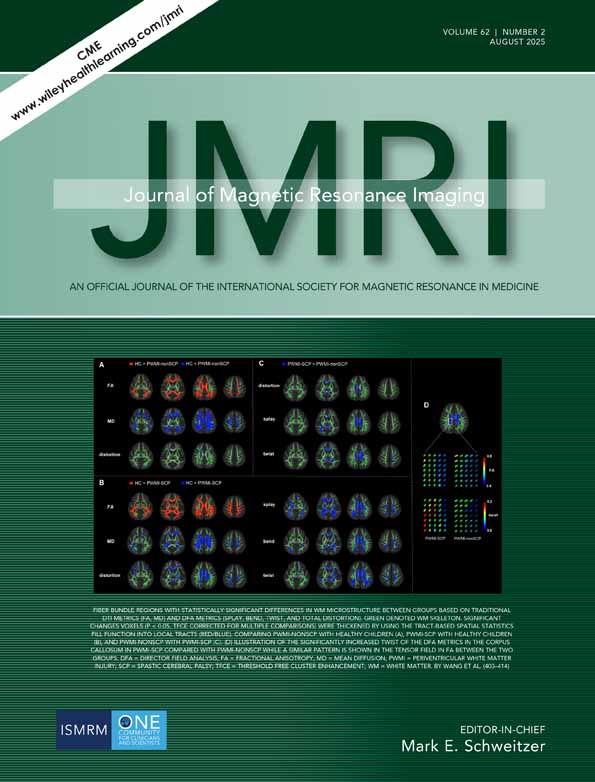The Application of Quasi-Steady-State Chemical Exchange Saturation Transfer Imaging in the Visualization of Glioma Infiltration and the Optimal Extent of Resection Establishment
Funding: This work was supported by the National Natural Science Foundation of China, 82281966. Science and Technology Innovation Action Plan of Shanghai Science and Technology Commission, 22S31905900.
Yinwei Ying, Yajing Zhao, Dongdong Wang and Kai Quan contributed equally to this work.
ABSTRACT
Background
The quasi-steady-state (QUASS) algorithm improves chemical exchange saturation transfer (CEST) reliability, but its efficacy in detecting glioma infiltration is unclear.
Purpose
To assess apparent and QUASS CEST in visualizing glioma infiltration and predicting optimal extent-of-resection (EOR).
Study Type
Prospective.
Population
72 adult-type diffuse glioma patients (37 males, 49.57 ± 14.76 years) and 24 healthy volunteers (12 males, 48.71 ± 14.23 years).
Fieldstrength/Sequence
3 T, fast spin-echo CEST.
Assessment
Apparent and QUASS CEST effects (amide proton transfer [APT], combined magnetization transfer and nuclear overhauser enhancement and the 2-ppm chemical exchange saturation transfer peak) were calculated in solid tumor, edema, contralateral normal apparent white matter (CNAWM) in glioma patients, and white matter in healthy individuals (WMH). Comparisons were made between these four regions, high-/low-grade gliomas (HGGs/LGGs), and isocitrate dehydrogenase (IDH)-mutant/wild-type gliomas. Twenty-seven biopsy samples from glioblastomas and peritumoral regions were selected and traced back to the original images. Then, correlations between CEST effects, cellularity, and Ki-67 labeling index (LI) were assessed. An optimal cutoff value for the normalized ratios of QUASS APT (QUASS_rAPT) was generated.
Statistical Tests
Linear mixed models, t-test, receiver-operating characteristic analysis, and Pearson's correlation tests were used. The statistical significance was set at p ≤ 0.05.
Results
QUASS_APT value decreased significantly from tumor solid area, edema, and CNAWM to WMH (3.887 ± 1.489, 2.556 ± 0.985, and 1.584 ± 0.462, respectively). QUASS_rAPT of solid tumor area differentiated LGGs from HGGs (1.878 ± 0.515 vs. 2.857 ± 1.026) and IDH-mutant gliomas from IDH wild-type gliomas (2.195 ± 0.769 vs. 2.875 ± 1.092). QUASS_rAPT strongly correlated with cell density and Ki-67 LI (r = 0.801 and 0.776). The optimal cutoff value of QUASS_rAPT was 1.300.
Data Conclusion
Compared to other CEST effects and apparent methods, QUASS_rAPT enhances glioma stratification and better reflects cell density and proliferative potential. A QUASS_rAPT > 1.30 optimized EOR prediction in glioblastomas.
Evidence Level
2.
Technical Efficacy
Stage 2.




